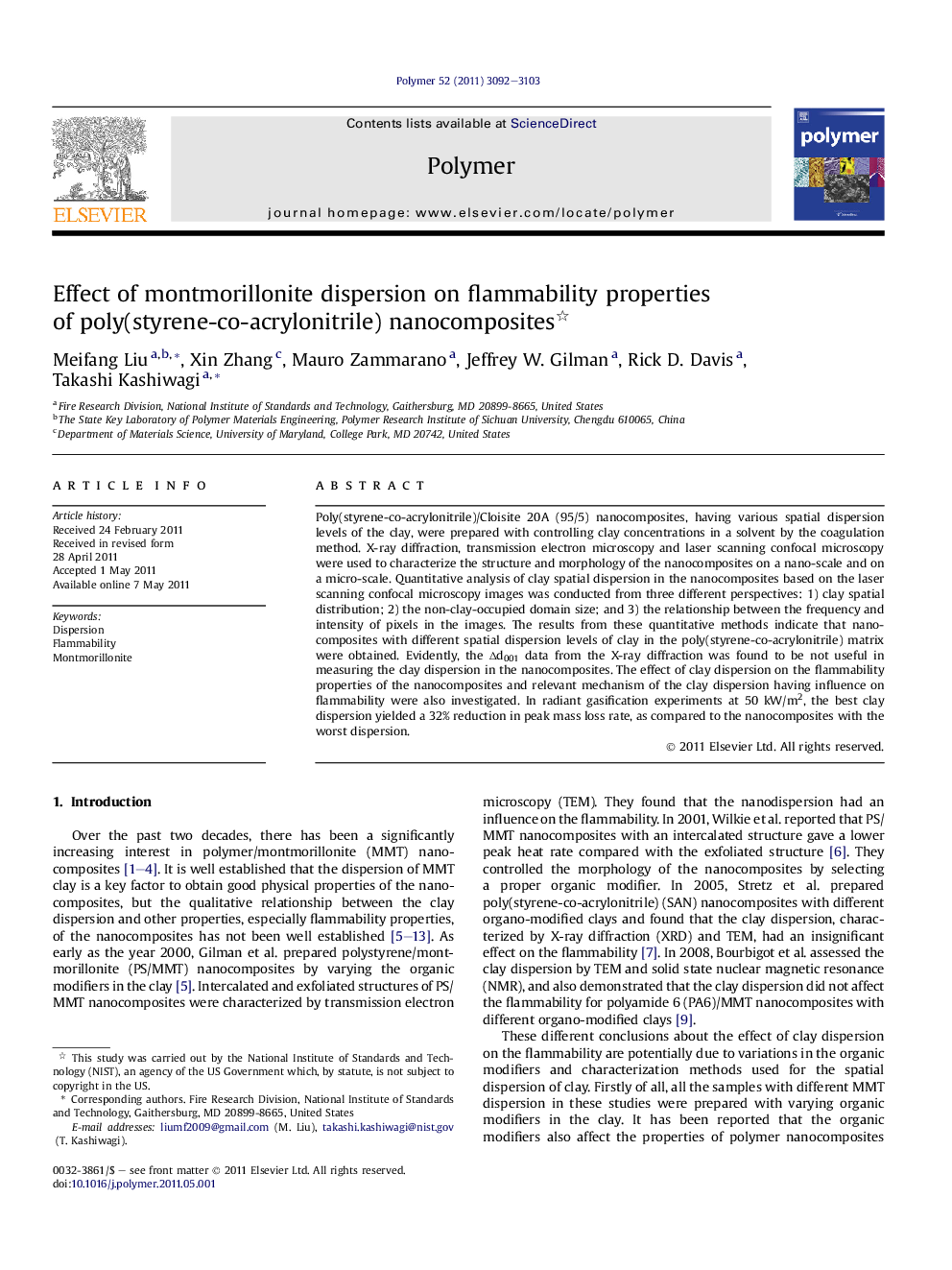| Article ID | Journal | Published Year | Pages | File Type |
|---|---|---|---|---|
| 5184497 | Polymer | 2011 | 12 Pages |
Poly(styrene-co-acrylonitrile)/Cloisite 20A (95/5) nanocomposites, having various spatial dispersion levels of the clay, were prepared with controlling clay concentrations in a solvent by the coagulation method. X-ray diffraction, transmission electron microscopy and laser scanning confocal microscopy were used to characterize the structure and morphology of the nanocomposites on a nano-scale and on a micro-scale. Quantitative analysis of clay spatial dispersion in the nanocomposites based on the laser scanning confocal microscopy images was conducted from three different perspectives: 1) clay spatial distribution; 2) the non-clay-occupied domain size; and 3) the relationship between the frequency and intensity of pixels in the images. The results from these quantitative methods indicate that nanocomposites with different spatial dispersion levels of clay in the poly(styrene-co-acrylonitrile) matrix were obtained. Evidently, the âd001 data from the X-ray diffraction was found to be not useful in measuring the clay dispersion in the nanocomposites. The effect of clay dispersion on the flammability properties of the nanocomposites and relevant mechanism of the clay dispersion having influence on flammability were also investigated. In radiant gasification experiments at 50Â kW/m2, the best clay dispersion yielded a 32% reduction in peak mass loss rate, as compared to the nanocomposites with the worst dispersion.
Graphical abstractDownload full-size image
